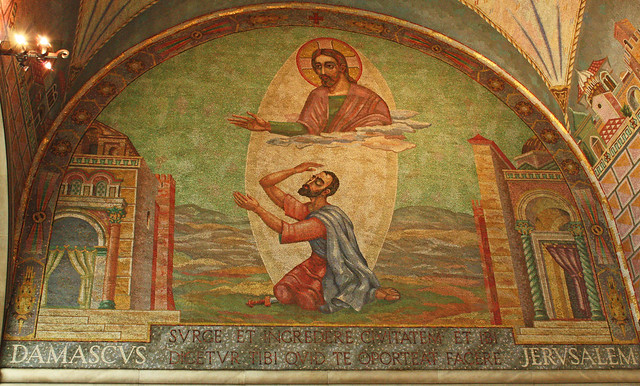
Last year, as part of our study programme here at Blackfriars, I attended a series of lectures on psychology and its intersections with theology. I was surprised to discover that psychology had preserved a theory of 'original sin', expressed under a number of different guises, during that period in the twentieth century when many theologians became reluctant to endorse the teaching.
Psychologists such as Freud, Jung, and Klein argued in favour of a link between the experiences of early childhood and the formation of unconscious aspects of the mind which can affect an individual's adult behaviour without them necessarily being aware of it. If correct, this theory has some interesting implications for the way we think about original sin which, as Herbert McCabe OP puts it, is 'sin that has infected us from our origins'.
Mary, of course, was protected from sin from her conception. She was free from original sin. This was so she could be a fitting ark for the new covenant. Yet Mary remained an 'ark' for Jesus for longer than the nine months that he was in her womb. She provided the loving context in which his human nature matured and he became the Man that God willed him to be. In the image of Mary and the child Jesus, then, we see the ideal human community. We see a loving relationship that allows both Mary and Jesus to become what they were meant to be. Through Christ's death and resurrection we can now enter into this community, becoming members of Christ, with Mary as our Mother, in order that we might reach our final end in God that is our beatitude.
Psychologists such as Freud, Jung, and Klein argued in favour of a link between the experiences of early childhood and the formation of unconscious aspects of the mind which can affect an individual's adult behaviour without them necessarily being aware of it. If correct, this theory has some interesting implications for the way we think about original sin which, as Herbert McCabe OP puts it, is 'sin that has infected us from our origins'.
Traditionally original sin has been understood as a defect in human nature that has been handed on from generation to generation. Sometimes it has even been associated with our biology but always with our solidarity with each other as members of the same 'race'. However, in the wake of Darwin's theory of evolution attempts have been made to complement this view, looking not just at our birth into the human race but with an added emphasis on the process after birth in which an individual comes to full personhood. If we are to become the person we were made to be, we must be immersed in loving relationships. The sad fact is that we are born into a world which starves us of this love and stunts our development. In a sense we are crippled from our origins by a lack of love, and this, so the argument goes, is the root of all evil that we call original sin.
Mary, of course, was protected from sin from her conception. She was free from original sin. This was so she could be a fitting ark for the new covenant. Yet Mary remained an 'ark' for Jesus for longer than the nine months that he was in her womb. She provided the loving context in which his human nature matured and he became the Man that God willed him to be. In the image of Mary and the child Jesus, then, we see the ideal human community. We see a loving relationship that allows both Mary and Jesus to become what they were meant to be. Through Christ's death and resurrection we can now enter into this community, becoming members of Christ, with Mary as our Mother, in order that we might reach our final end in God that is our beatitude.













































